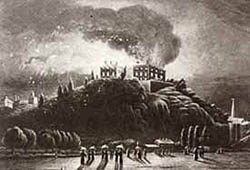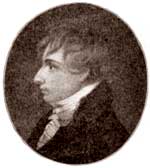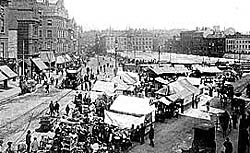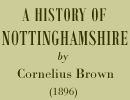< Previous | Contents | Next >

Nottingham Castle burning on 8 October, 1831.
But if Nottingham went almost mad in its devotion to Charles II. on his return, it was one of the first to declare against James II. The Earl of Devonshire, Lord Howe, Lord Delamere, and others, appeared at the Malt Cross and declared against the arbitrary measures of his Majesty, whereupon the town became the headquarters of the Northern insurrection, and was enthusiastic in the movement that placed William III. on the throne of England.
About this period the castle underwent repair, and the Princess Anne resided in it in 1689. For the next hundred years nothing notable occurred in the history of the great stronghold; but 1831 saw a memorable riot, caused by the refusal of Parliament to reform the representation of the people in the House of Commons. On Saturday, October 8, 1831, news came that the Lords had thrown out Lord Grey’s measure, and on the following Monday a tumultuous mob, having ransacked Colwick Hall, raised the cry, ‘To the castle!’ In a short space the noble pile was in flames, and the next morning only the blackened walls remained. Two men were prosecuted for this incendiarism, but the prosecution was abandoned; the Duke of Newcastle, however, obtained a verdict for £21,000 against the inhabitants of the Hundred of Broxtowe as compensation for the wanton destruction of his property. A few years ago the castle was restored, and is now devoted to the purposes of an Art Museum.

Henry Kirke White (1785-1806).
And now a few words as to the worthies who have helped to make the name of the old town famous in days gone by. Pious William Brightman, a well-known writer on theological subjects in the sixteenth century, was a native of Nottingham, and did it no discredit. He died suddenly in 1607; as quaint old Fuller puts it, ‘His clay cottage did crack and fall down in the same minute; but he who died daily could on no day be said to die suddenly, being always prepared for his dissolution.’ Gilbert Wakefield, another prolific writer, died in 1608 ; and in 1806 one of the best known and most popular poets passed away—Henry Kirke White, who was born in the old house in Exchange Alley, the front of which is appropriately adorned with his portrait. The local paper of the period, in a grandiloquent notice of his death, says, ‘He fell at a moment when every eye was fixed upon him, when the greatest expectations were formed concerning him, and when his too sanguine friends were predicting his future eminence. We see in his life,’ says the writer in a moralizing vein, ‘an example worthy of imitation, a lesson on the precarious tenure of human life, and the frailty of every sublunary expectation.’ Dr. Andrew Kippis, an eminent Nonconformist, was another native of the Borough, as was also Paul Sandby, the artist. On July 16, 1824, the town was agitated by the funeral of a famous man who, though not born within its precincts, was very familiar to its inhabitants. The hearse conveying the remains of Lord Byron was met by thousands of people at the south end of the town, and followed in mournful silence along Fisher’s Gate, Hockley, and up Canton Street to the Blackamoor’s Head, Pelham Street, where it remained for the night. The coffin was placed in the room at the north-west corner of the yard, and wax candles put around it. The public were then admitted, about twenty at a time, to walk round and out again; but such was the pressure and anxiety to see the spectacle, that a very large body of constables was necessary to clear the way, and to keep anything like a clear ingress and egress. When the procession left on the following morning, the Mayor and Corporation attended, and most of the townspeople were attired in mourning. To return to natives of the town, mention must be made of Rossi, the sculptor; Millhouse, the poet; Thomas Bailey, the historian; Dr. Marshall Hall; Dawson, the artist; and of living worthies, the gifted author of ‘Festus’ (Mr. Philip James Bailey), Mr. E. J. Lowe, the astronomer; Mr. Laslett J. Pott, artist, and many others who in varied walks of public life are worthily sustaining the fame of the county town.
 The market place, Nottingham,
in 1905.
The market place, Nottingham,
in 1905.Nottingham is now one of the most extensive emporiums of trade in the Midlands. Its population has risen from 40,505 in 1821 to 250,000 at the present time, the staple industries being the manufacture of lace and hosiery. The great market-place is the most capacious of its kind in England, and at the annual Goose Fair its appearance is one of extraordinary life and animation. Nottingham, with its trade, its noble University College, its splendid Free Library, its delightful Art Museum, and its many advantages—commercial, educational, and residential— seems destined to grow in wealth and importance, for the energy of its citizens and its central situation combine to make it one of the foremost boroughs in England.
